Cold Weather Camping Gear
Important Reminders
- Boy Scout Motto: "Be Prepared!"
- Remember the adage: "If you are too cold to be outside without a fire, you are too cold to be outside." Everyone needs to prepare properly.
- Below are a number of suggestions, many of which are used by members of our Troop. However, before spending a lot of money, consider which items will be the most cost effective and most useful for both Scouting campouts and activities as well as general use daily.
- A Scout is Thrifty; you can find many ways to stay warm while spending relatively small amounts of money. Look for the Thrifty tags below.
- Scoutmaster Favorites are highlighted with SM-Fav tags below.
- Cotton Kills!: Cotton is a poor insulator when it becomes damp from elements, perspiration - even light perspiration, or humidity. Try to avoid cotton in any clothing or sleep system. It may be hard to eliminate cotton, but minimizing its use is best. Use natural wool, down, or synthetics like fleece instead. Why Cotton Kills, A Technical Explanation
Clothing
- Try to reduce or eliminate cotton clothing. Cotton does not insulate well when even slightly damp including from very light perspiration. Synthetics like fleece (awesome invention) and items like wool are much better. If cotton is worn, a synthetic base layer should be under it and an outer layer, i.e. a coat, etc., worn on top of the cotton layer.
- Layering is important; being able to remove a layer when warm or add a layer when cold is best. Avoid sweating or being cold.
Feet
- Thrifty: You can add some insulation into your boots cheaply. Auto sun shades can be purchased at a Dollar Store for $1 each. Video on how to insulate boots with cheap car sun shade.
- SM-Fav Wear synthetic sock liners with your socks. This adds a layer and the liners will remove moisture from the skin and move it to the external layers. Commercial "sock liners" are available at Dick's, Sports Authority, Amazon, and likely Bass Pro Shop: Coolmax Liner Thrifty: You can also use mens synthetic dress socks made of polyester like many available at Target. Polyester Dress Socks You can choose your color and pattern. ☺
- Wool/Wool-blend socks. Avoid cotton socks.
- Consider bringing and wearing winter boots as they often have more insulation. Bring as a second pair if you want flexibility.
- Depending on the boots you choose, especially hiking boots, if possible make sure they are waterproof. Many current manufacturer hiking boots will have a Gore-Tex liner which make them waterproof. Keeping moisture out of your boots from snow, slush, rain, and dew will help keep your feet warmer.
- Thrifty: If your boots are not waterproof, you could use a grocery bag over your sock liner and under your insulating socks to keep moisture from reaching your insulation layer.
- More tips are available at the GearJunkie.
- For heavy snow, you could add gaiters.
Legs
- Synthetic long underwear is a must in cold weather - at least the pants. Under Armor or similar (Champion @ Target is fine and much cheaper) for shirts is okay, but get a good long underwear base layer pants.
- Wear non-cotton pants if possible. Yes, most of us have jeans. But, wearing synthetic pants, including the Boy Scout switchback pants or similar pants from sporting goods stores, is much better.
- Consider wearing a layer to stay dry, especially if you are wearing jeans. Wear snow pants or rain pants.
Torso
- Use under armor style synthetic - usually polyester - shirts. Thrifty: Champion @ Target is fine and much cheaper than Under Armor; you can find both long sleeve and short sleeve as well as tight fitting and loose fitting versions. Available options vary throughout the year but we have had good luck in general with the Champion clothing at Target.
- Bring your winter coat. A hood on a winter coat can be a layer over a stocking hat.
- Thrifty: Your rain coat can be a layer in cold as well. It will break the wind and add insulation.
Hands
- SM-Fav Glove liners: you can use Under Armor or similar thin gloves as liners inside of regular snow gloves. Thrifty: Here is an example of a thin gloves, called running gloves, at Amazon: Champion Running Gloves
- Gloves or mittens.
- Mittens are better than gloves for warmth, but can be harder to use for activities. You might consider convertible gloves.
- SM-Fav We would like Scouts to have leather work gloves, but they can also have insulated work gloves for the winter. We suggest layering these over the glove liners above.
Neck, Face, and Head
- Bring hats, scarves, etc. A Balaclava if you have one. Again, synthetic or wool are the best materials.
- A fleece neckwarmer may be useful. An example is this one by Turtle Fur
- SM-Fav A lightweight layer can be added for the neck, head, face, or other uses in the form of a Buff.
Sleeping
- Wear a hat while sleeping.
- Don't breath into the sleeping bag as it condenses, gets the sleeping bag wet, and makes you colder as the bag loses insulation due to being wet.
- Before bed, change all your clothes including underwear to clean, dry clothes. Dry off with a towel before putting them on.
- Lightly exercise before bed to warm up all muscles and add body heat to your sleep system. Do not sweat.
- Eat some food/carbohydrates before bed to provide the body with fuel to generate heat. As always, food should be eaten and stored outside of tents to prevent animals from becoming interested in your tent.
- Bring a fleece or wool blanket to line the bottom of your sleeping bag.
- A sleeping bag liner, a second fleece blanket, etc., can be used inside your bag to add additional warmth. Some to consider are these: Fleece Travel Bag can also double as a very warm weather bag and the Sea to Summit Sleeping Bag Liners; Sea to Summit makes several different thickness liners with varying warmth factors.
- If you have a second sleeping bag, consider bringing it to layer over the first. You do not want to sweat, so opening, closing, or removing it may be necessary.
- Add insulation between you and the ground. Thrifty: Scroll down for details on making a foam pad and sleep system.
- Make sure you have good insulation under you in the form of a ground pad like one from Thermarest or other brands; shop around for best prices. Also, we have seen recent sales and clearance from Alps Mountaineering and related brands on self-inflating pads; these tend to be very good prices. Air only mattresses will conduct heat (cold) very quickly. Self inflating, closed cell, etc. pads are good. Synthetic or down insulated pads are expensive but very good.
- Thrifty: You can add extra insulation using the second sleeping bag, a non-cotton (fleece) blanket, styrofoam pad, etc.
- Thrifty: You can use cheap car sun shades to add a layer of insulation. These can be purchased from a Dollar Store for $1 each. Video using a sun shade. You can use two to cover all of your sleeping pad.
- If you have fleece or wool socks, you might want to wear a clean pair to bed to help keep your feet warm.
- SM-Fav Avoid leaving your tent during the night! Consider using the Gatorade bottle; just saying. If you need to ask what this is, please do. ☺ Staying in your tent keeps the warmer air in and your body warmer; you don't need to warm up again.
Making an Inexpensive Sleep System
Thrifty: The ground can be cold. The cold is transmitted quickly to anything resting on top of it. To sleep warm, it is important to have insulation between you and the ground. Here is a simple sleep system to provide you with considerable insulation for cold weather.Foam Insulation Base
You can use building construction foam to make a simple base of insulation. You can use "Foamular" purchased from a building supply store (Home Depot, Lowes, Menards). You can purchase large 4'x8' sheets and cut them yourself or, at least at Home Depot, you can purchase 2'x2' panels. The 2'x2' panels are a perfect size to put together quickly into a foldable sleep base.Here is a link to the Home Depot page for the 2'x2' panels. They are relatively inexpensive, about $5.50/panel, and you need 3 panels. 2'x2' Foamular Panel
Making the Foam Base
Start with your three foam panels as shown.
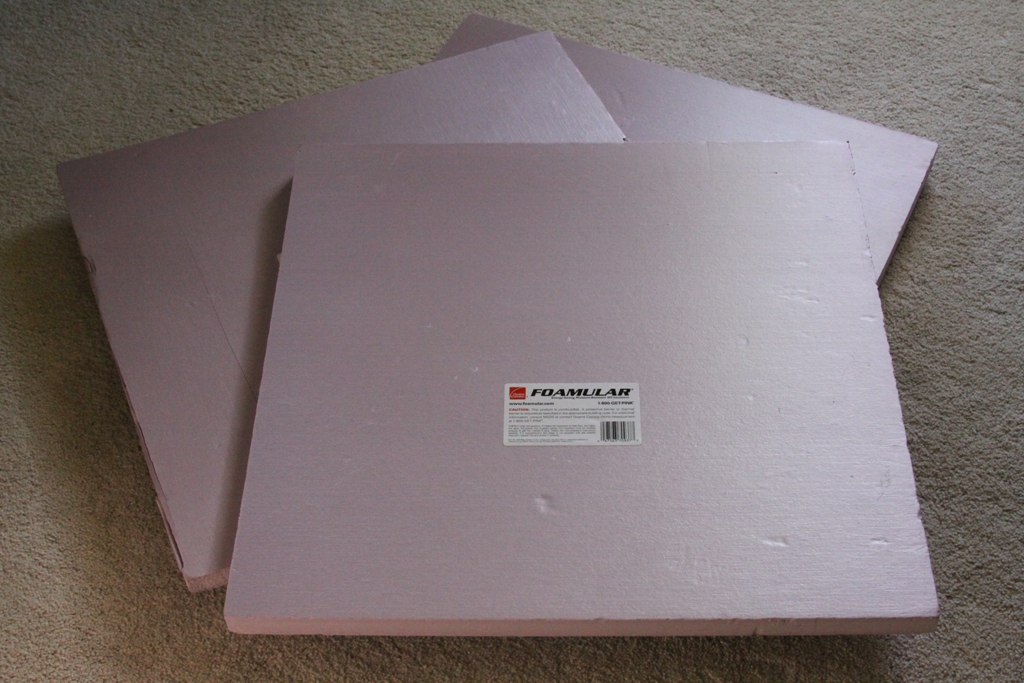
Cover the edges with duct tape and connect the panels as follows.
- On 2 of the panels, cover 3 sides with duct tape. Leave one side uncovered; this side will be used to connect to the next panel. These will be the end panels.
- On 1 panel, cover 2 of the opposite sides of the panel with duct tape. Leave 2 sides opposite each other uncovered. This will be the middle panel.
- Take one of the end panels with 3 sides covered and the middle panel with 2 sides covered, and place them together so that an unconvered edge on each touch each other making a seam. Now use duct tape to connect the seam.
- Now flip the set of 2 panels over.
- Take the remaining end panel, with 3 sides covered, and place it next to the remaining uncovered edge of the middle panel making a seam. Duct tape to connect the seam.
- You can finish the panel by bending the seams and placing duct tape on the inside of the seams to cover the remaining edges and to add strength to the seam.
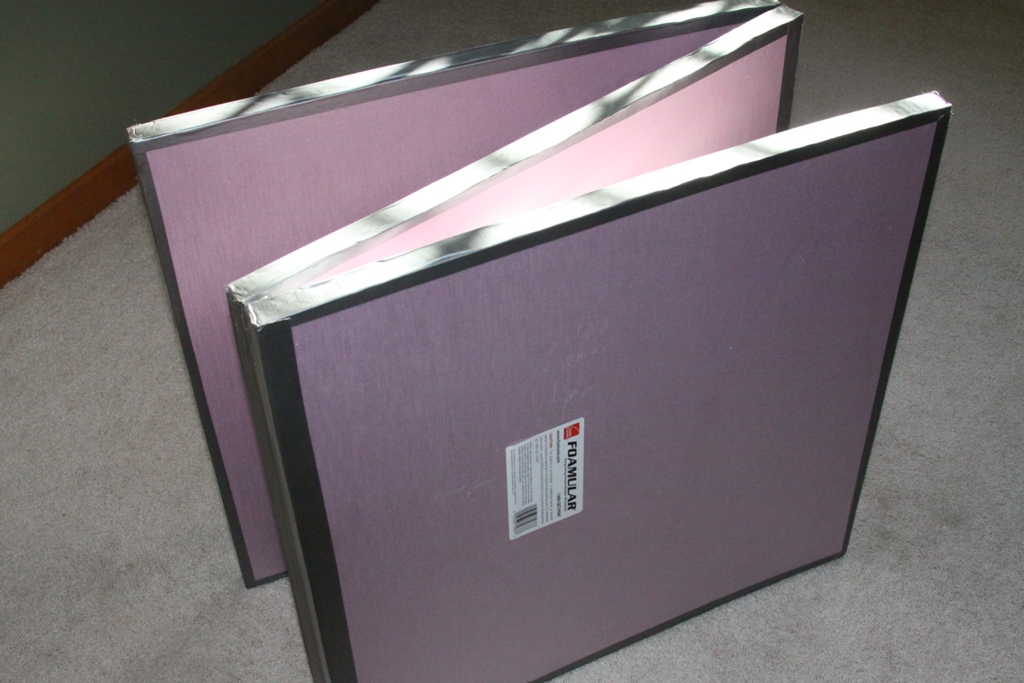
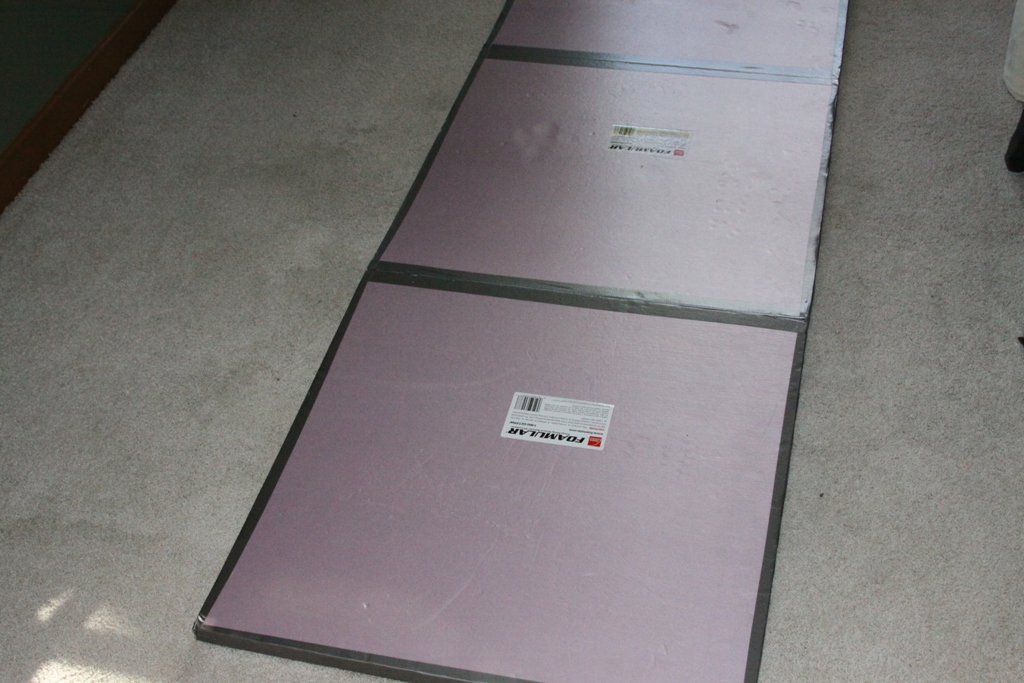
Making the Sleep System
Use the foam pad as the base, then place your sleeping pad on top of the foam pad and your sleeping bag on top of both to make your sleep system. You will have a considerable amount of insulation to help keep you warm.
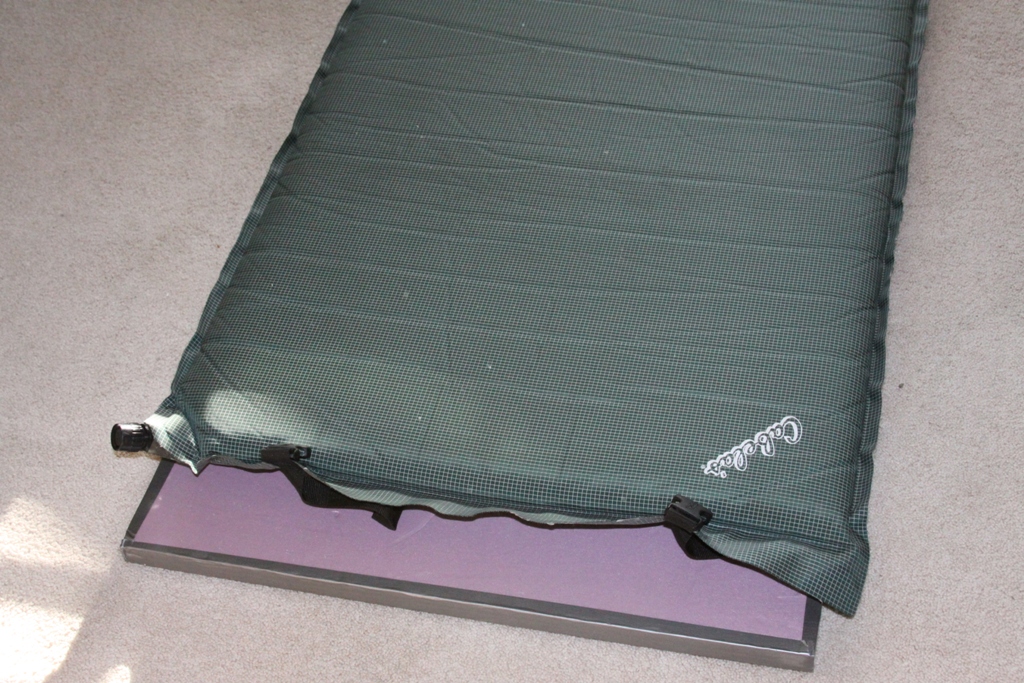
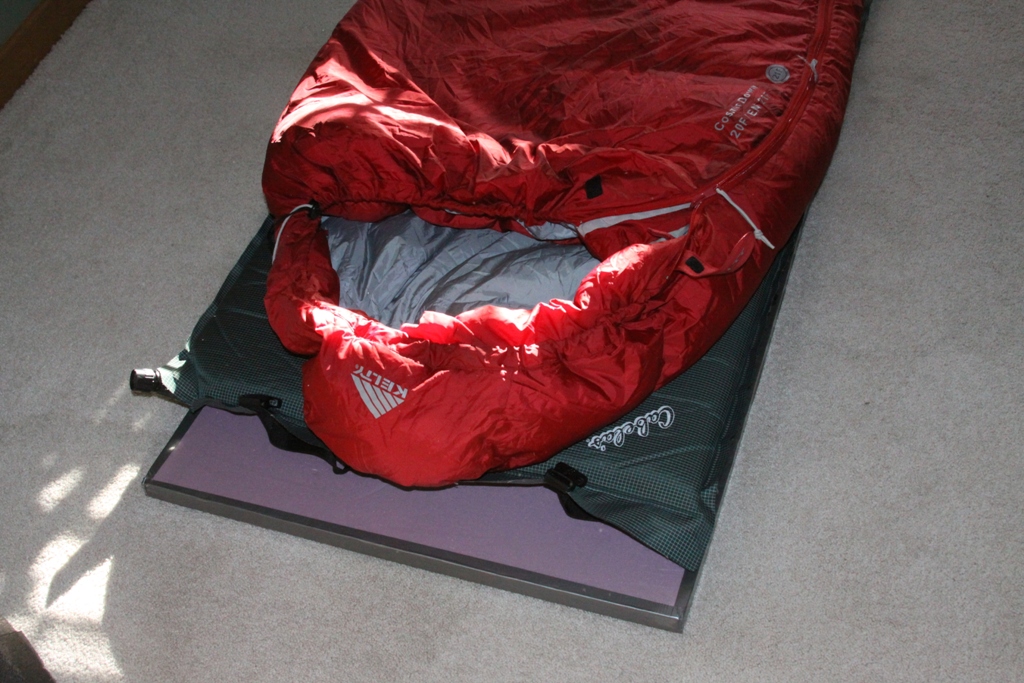
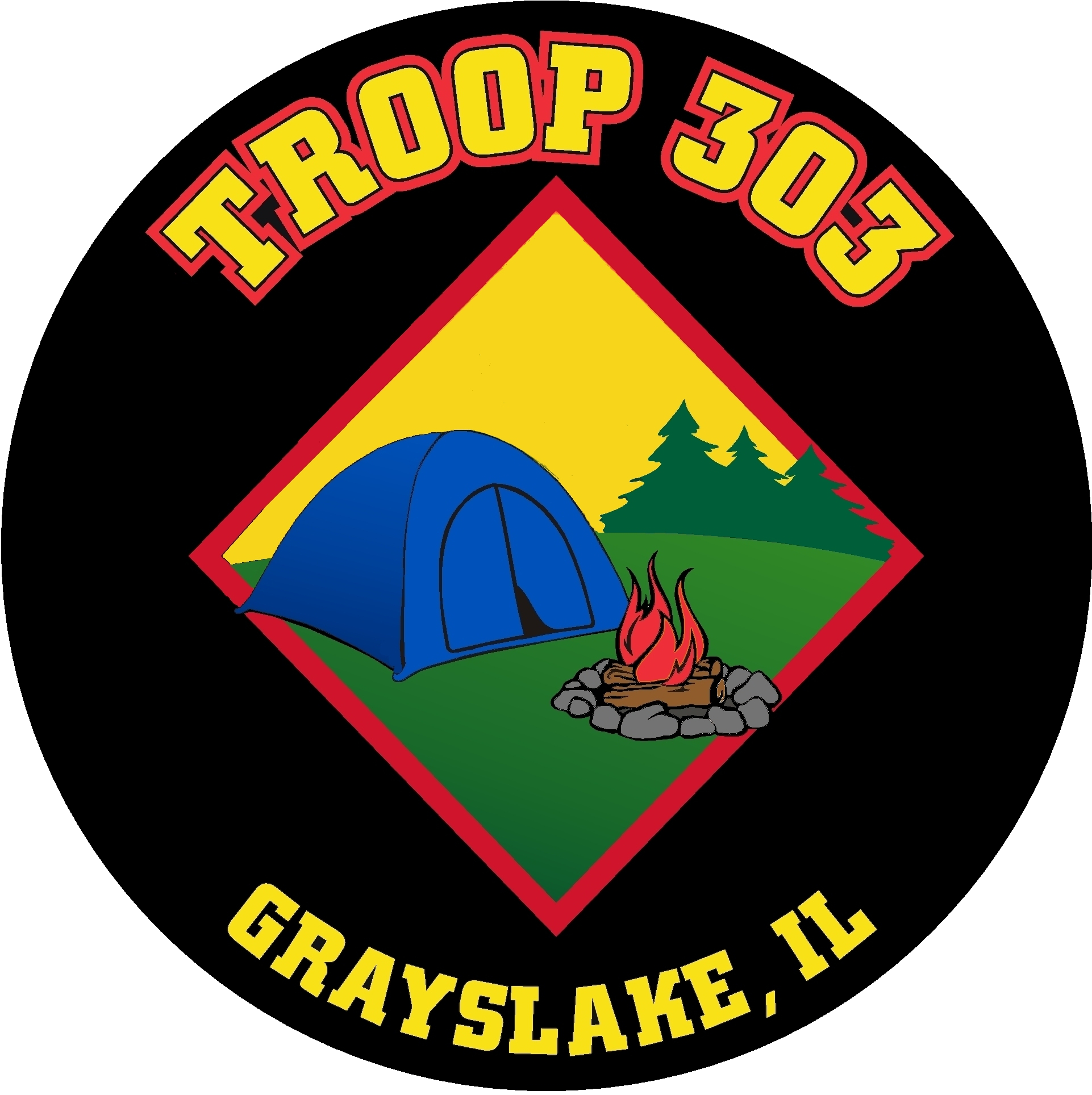
 Boy Scout Troop 303
Boy Scout Troop 303